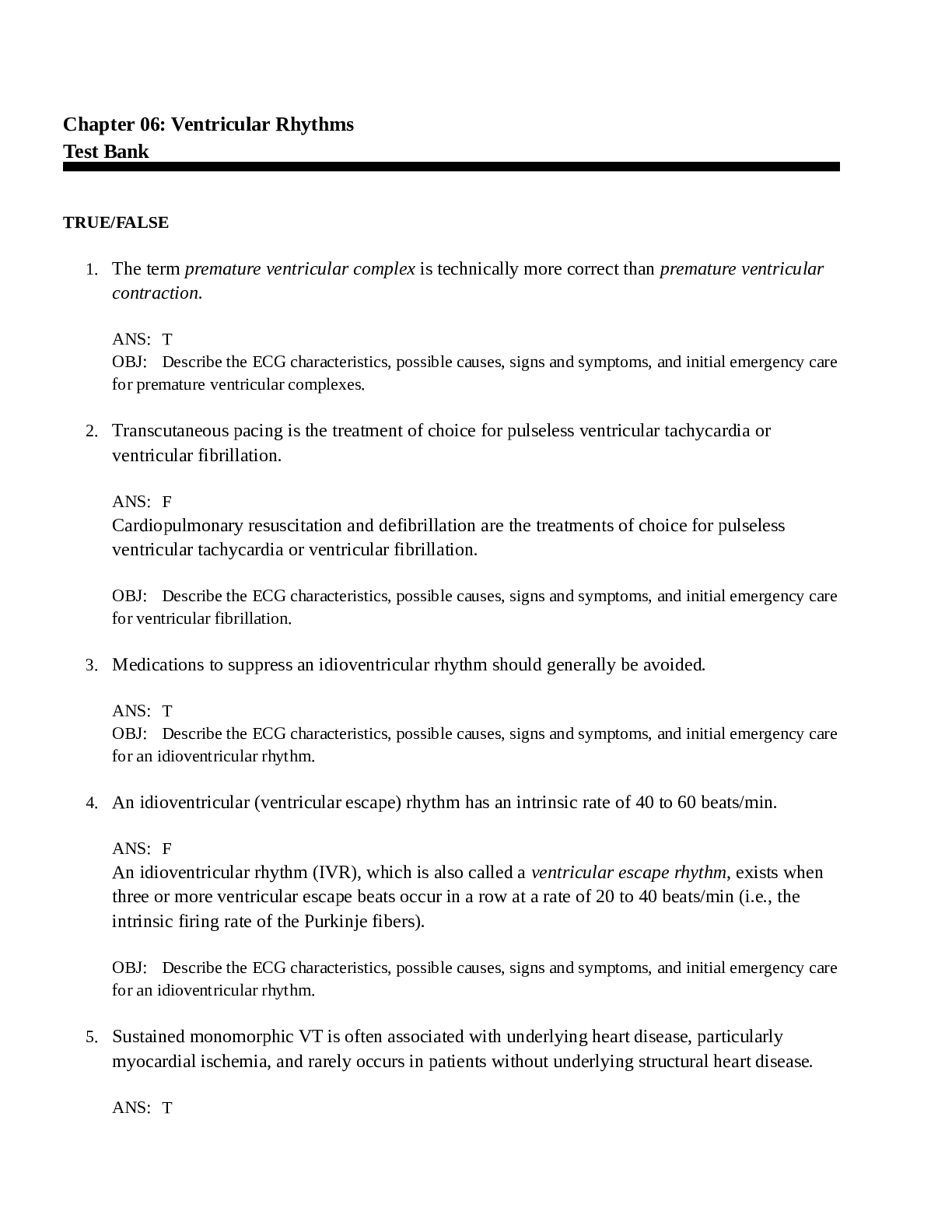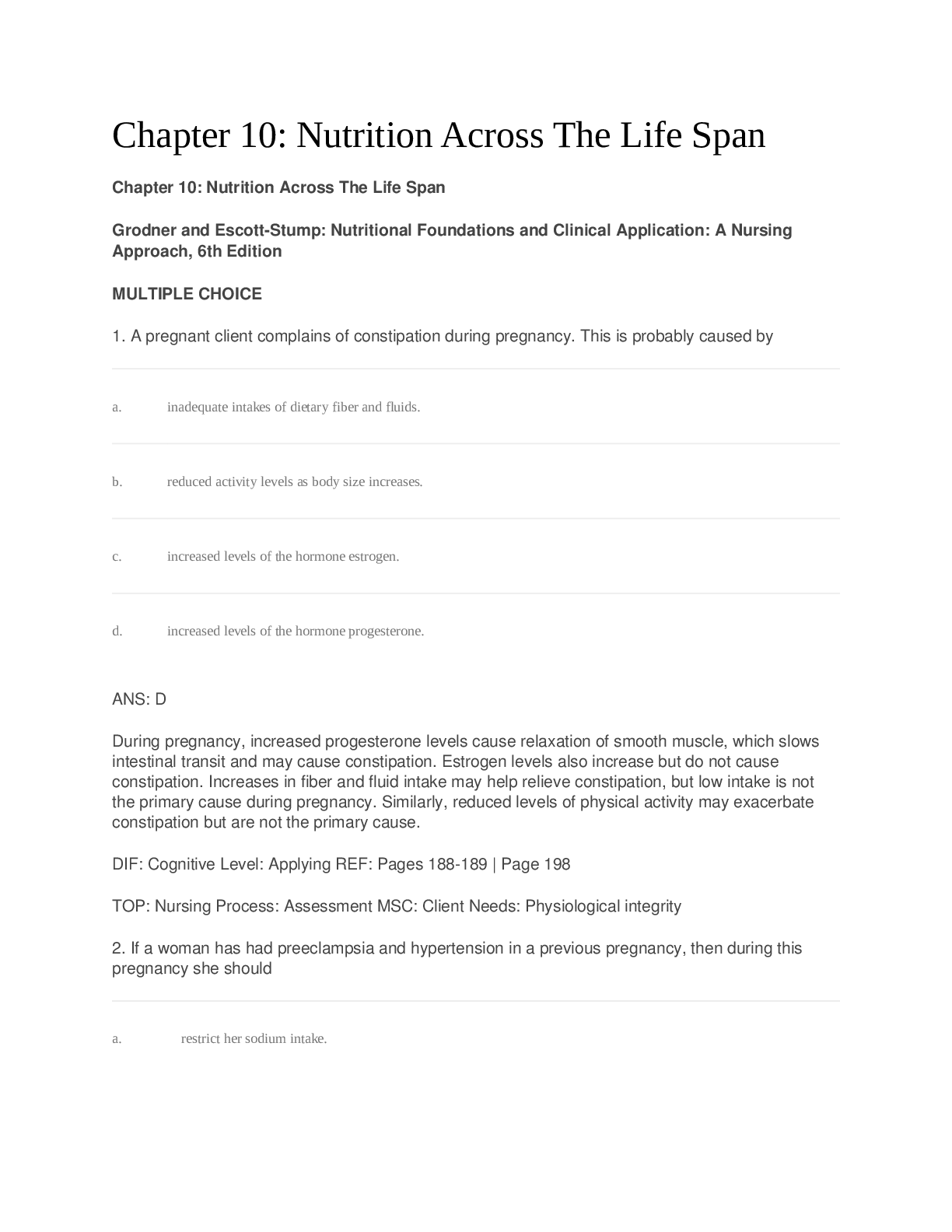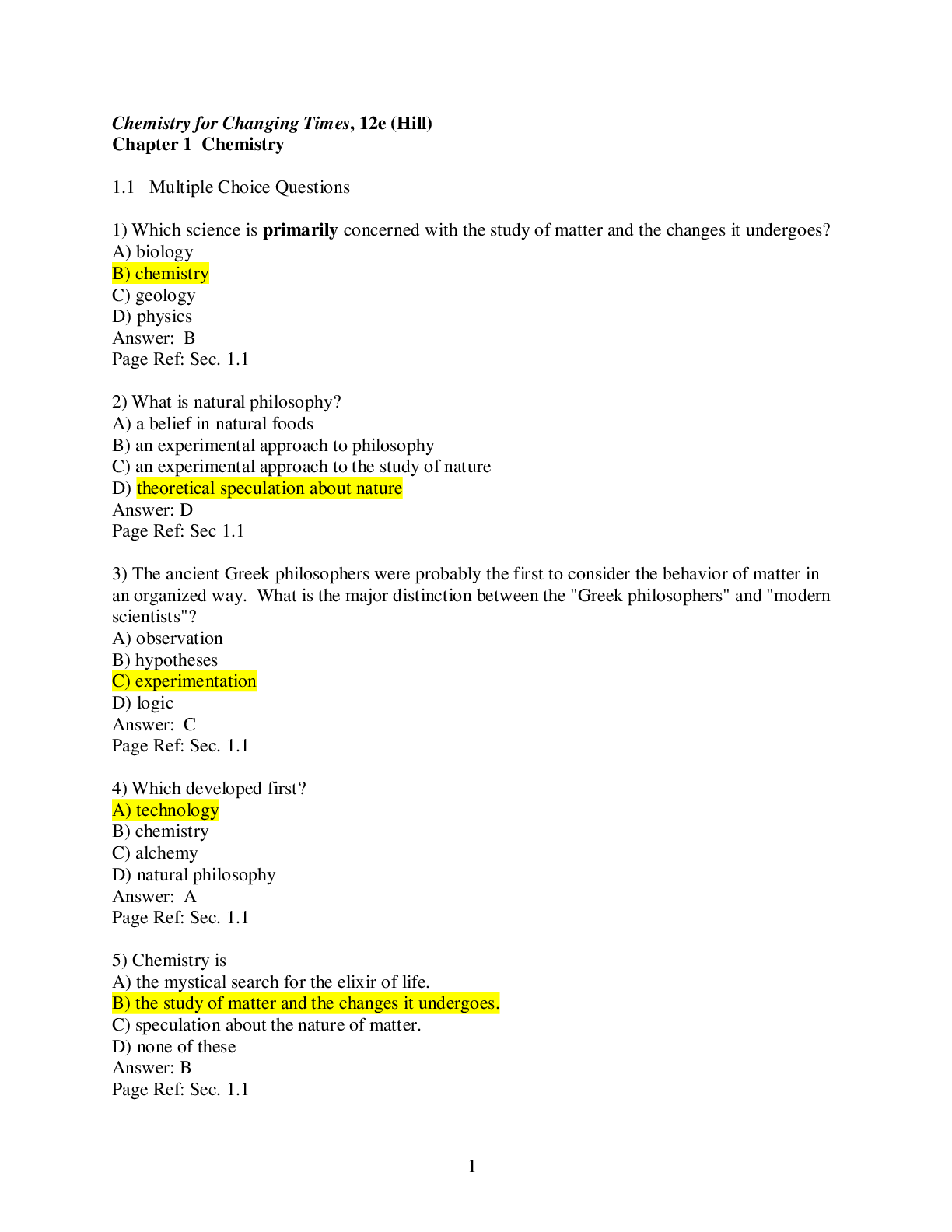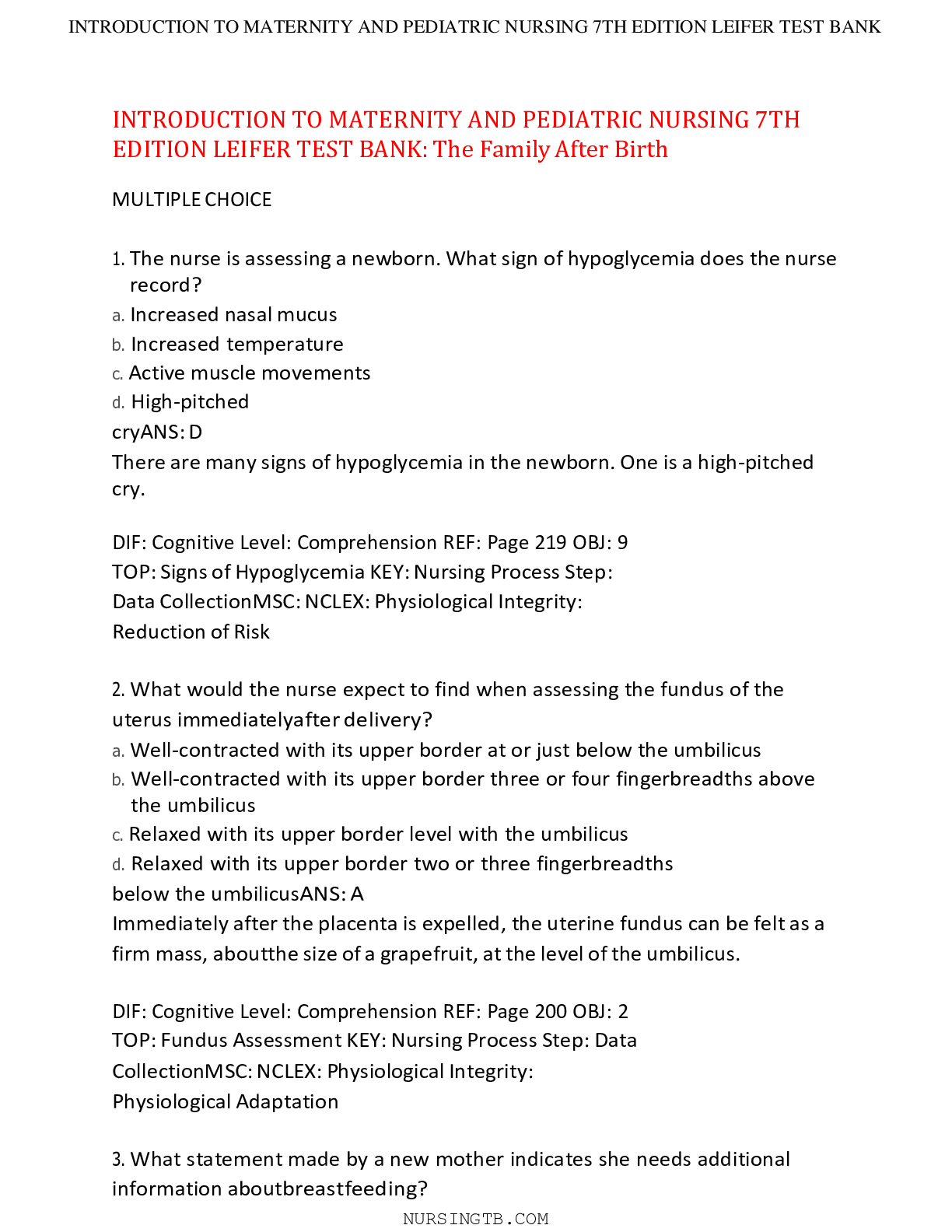*NURSING > EXAM > TEST BANK FOR ECGS MADE EASY 6TH EDITION BY BARBARA Chapter 06: Ventricular Rhythm (All)
TEST BANK FOR ECGS MADE EASY 6TH EDITION BY BARBARA Chapter 06: Ventricular Rhythm
Document Content and Description Below
MULTIPLE CHOICE 1. Which of the following best describes an idioventricular rhythm? a. Rapid, chaotic rhythm with no pattern or regularity b. Gradual alteration in the amplitude and direction of the Q... RS; atrial rate indiscernible; ventricular rate 150 to 250 beats/min c. Essentially regular ventricular rhythm with QRS complexes measuring 0.12 seconds or greater; atrial rate not discernible; ventricular rate 20 to 40 beats/min d. Regular ventricular rhythm with QRS complexes measuring less than 0.10 seconds; P waves may occur before, during, or after the QRS; ventricular rate 40 to 60 beats/min ANS: C An idioventricular rhythm (IVR), which is also called a ventricular escape rhythm, exists when three or more ventricular escape beats occur in a row at a rate of 20 to 40 beats/min (i.e., the intrinsic firing rate of the Purkinje fibers). The QRS complexes seen in IVR are wide and bizarre because the impulses begin in the ventricles, bypassing the normal conduction pathway. When the ventricular rate slows to a rate of less than 20 beats/min, some practitioners refer to the rhythm as an agonal rhythm or dying heart. OBJ: Describe the ECG characteristics, possible causes, signs and symptoms, and initial emergency care for an idioventricular rhythm. 2. What is meant by the term pulseless electrical activity (PEA)? a. A chaotic rhythm that is likely to degenerate into cardiac arrest b. An organized rhythm on the cardiac monitor (other than VT), although a pulse is not present c. A slow rhythm with a wide QRS complex d. A flat line on the cardiac monitor ANS: B If the patient is not breathing and has no pulse despite the appearance of organized electrical activity on the cardiac monitor (other than VT), pulseless electrical activity (PEA) exists. OBJ: Explain the term pulseless electrical activity. 3. How would you differentiate a junctional escape rhythm at 40 beats/min from a ventricular escape rhythm at the same rate? a. It is impossible to differentiate a junctional escape rhythm from a ventricular escape rhythm. b. The junctional escape rhythm will have a narrow QRS complex; the ventricular escape rhythm will have a wide QRS complex. c. The rate (40 beats/min) would indicate a junctional escape rhythm, not a ventricular escape rhythm. d. The junctional escape rhythm will have a wide QRS complex; the ventricular escape rhythm will have a narrow QRS complex. ANS: B Although junctional and ventricular rhythms are ectopic pacemaker sites, their rhythms can generally be differentiated by the width of their QRS complexes. The junctional escape rhythm will have a narrow QRS complex; the ventricular escape rhythm will have a wide QRS complex. OBJ: Describe the ECG characteristics, possible causes, signs and symptoms, and initial emergency care for an idioventricular rhythm. 4. Which of the following best describes an accelerated idioventricular rhythm (AIVR)? a. Rapid, chaotic rhythm with no pattern or regularity b. Gradual alteration in the amplitude and direction of the QRS; atrial rate indiscernible, ventricular rate 150 to 250 beats/min c. Regular ventricular rhythm with QRS complexes measuring 0.10 seconds or less; P waves may occur before, during or after the QRS; ventricular rate 41 to 60 beats/min d. Essentially regular ventricular rhythm with QRS complexes measuring 0.12 seconds or greater; atrial rate not discernible; ventricular rate 41 to 100 beats/min [Show More]
Last updated: 1 year ago
Preview 1 out of 20 pages
Instant download

Buy this document to get the full access instantly
Instant Download Access after purchase
Add to cartInstant download
Reviews( 0 )
Document information
Connected school, study & course
About the document
Uploaded On
Jul 23, 2021
Number of pages
20
Written in
Additional information
This document has been written for:
Uploaded
Jul 23, 2021
Downloads
0
Views
53







.png)













